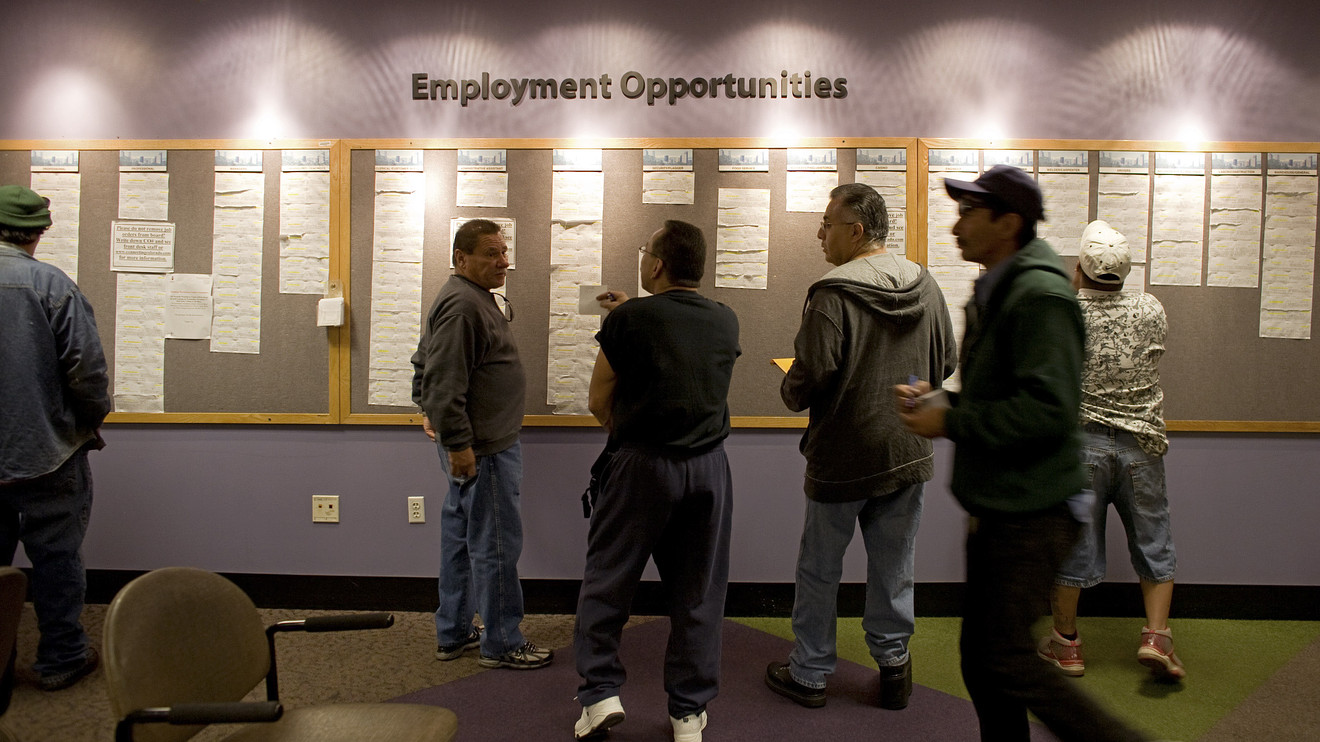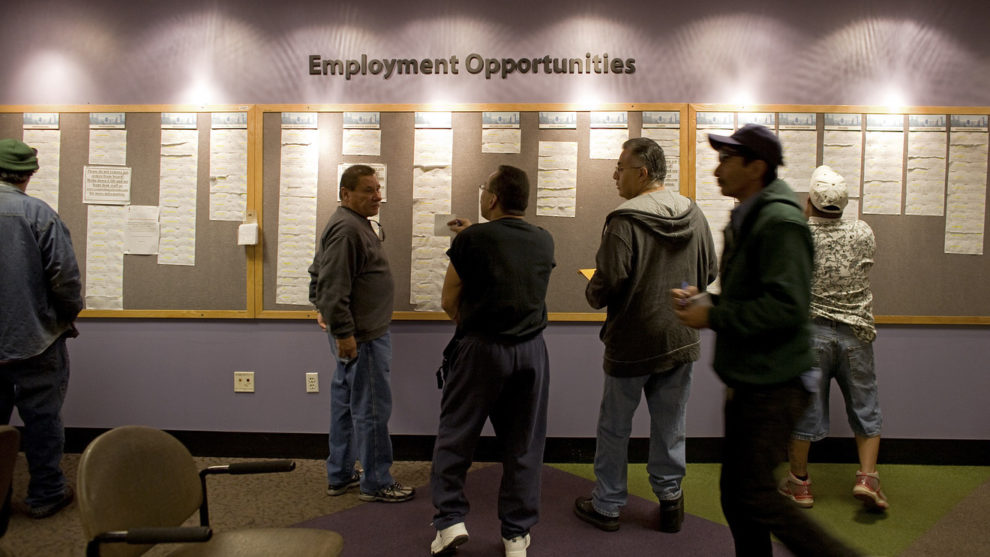
U.S. stocks rose at the start of trade Friday, reversing losses in premarket trade, after the Labor Department estimated that the American economy added 136,000 jobs in August, enough to let the unemployment rate to fall to a 50-year low of 3.5%, but not to dissuade the Federal Reserve from cutting interest rates further this year.
Investors await a speech from Federal Reserve chair Jerome Powell later Friday.
How are benchmarks performing?
The Dow Jones Industrial Average DJIA, +0.53% rose 134 points, or 0.5%, at 26,339, the S&P 500 index SPX, +0.50% added 14 points, or 0.5% to 2,925, while the Nasdaq Composite COMP, +0.53% advanced 42 points, or 0.5%, to 7,915.
On Thursday, the Dow closed up 122.42 points, or 0.47%, at 26,201.04 while the S&P 500 index rose 23.02 points, or 0.8% to 2,910.63, and the Nasdaq Composite Index rose 87.02 points to 7,872.26, a gain of 1.12%.
For the week, the Dow is on pace for a decline of 2.3% so far, the S&P 500 is set for a drop of 1.7%, the Nasdaq was set for a weekly drop of 0.9%, while the Russell 2000 index RUT, +0.45%, which suffered a bearish “death cross” on Thursday, was on track to shed 2.2%.
What’s driving the stock market?
The 136,000 new U.S. jobs created in September were slightly below the 150,000 forecast by economists surveyed by MarketWatch, but revisions to July and August job growth showed that the U.S. economy added 38,000 more jobs in those months than previously thought. The average job growth of 157,000 during the past three months is enough to keep the unemployment rate trending down, even as it illustrates a steady slowing of job growth in the U.S. labor market.
“This is the classic definition of a ‘Goldilocks’ report,” Michael Arone, chief investment strategist at State Street Global Advisors told MarketWatch. “The rate of job growth is slowing, but the labor market continues to be a strength of the U.S. economy.”
Average hourly earnings for workers ticked down one cent to $28.09, after rising 11 cents in August. Yearly growth in wages fell to 2.9% from 3.2% in August.
“The one concern is that average hourly earnings ticked down a bit,” Arone said. “Some might take this as a positive as because wages aren’t rising enough to feed into inflation, and it will allow the Fed to cut rates again.”
Investors are placing a slightly lower chance that the Fed will cut interest rates at its next meeting ending Oct. 30, with the Fed-funds futures markets pricing an 80.7% chance of a cut later this month, down from about 90% before the report was released. The market is still placing a more than 91% chance of a cut by the end of 2019, however.
The jobs data hold particular significance after reports about American factory activity showed evidence of contraction in September , with the Institute for Supply Management’s manufacturing report on Tuesday showing the weakest reading in about a decade and an ISM non-manufacturing report on Thursday, coming in at 52.6% — the weakest level in about three years.
Federal Reserve Vice Chairman Richard Clarida late Thursday played down the chances of a near-term recession. He said the risk remains low “with appropriate monetary policy,” speaking at a question-and-answer session sponsored by the Wall Street Journal.
Clarida offered no explicit forward guidance about whether the Fed would cut rates again at its meeting on Oct. 29-30.
A parade of other Fed speakers are set, headlined by a 2 p.m. talk from Fed chair Powell, where he will deliver opening remarks about employment and price stability at a Fed hosted event.
Before that, Boston Fed President Eric Rosengren spoke at 8:30 a.m. at an event in his home region, Atlanta Fed boss Raphael Bostic will speak at 10:25 a.m. in New Orleans, Minneapolis Fed President Neel Kashkari will talk at 12:45 p.m. at an event in his district. Capping off the Friday appearances are Fed Gov. Lael Brainard, who will moderate a panel at 2:10 p.m., and Fed Vice-Chairman for Supervision Randal Quarles, who moderates a panel at 4 p.m.
How are other markets trading?
Shares of Apple Inc. AAPL, +1.73% rose 2.4% in premarket trade after a report in the Nikkei Asian Review that the company has asked suppliers to ramp up production of its latest iPhone 11 model by 10%, or 8 million units.
Costco Wholesale Corp. COST, -0.96% reported fiscal fourth-quarter earnings after the close Thursday, with earnings and revenue falling short of Wall Street estimates, though same-store sales growth of 5.1% matched expectations. Shares were down 0.7% in premarket action.
How are other markets trading?
The yield on the 10-year U.S. Treasury note TMUBMUSD10Y, -0.06% rose about one basis point to 1.541%.
Gold prices retreated after settling higher on Thursday. Gold for December delivery GCZ19, -0.52% fell $7.20 to $1,505.30 an ounce on Comex.
West Texas Intermediate crude-oil for November delivery CLX19, +1.20% rose 49 cents, to $52.94 a barrel on the New York Mercantile Exchange.
In Asia overnight Wednesday, the Hong Kong’s Hang Seng HSI, -1.11% was down 1.1% as Hong Kong leader Carrie Lam banned protesters from wearing masks in a hardening of the government’s stance on the territory’s most disruptive crisis since it reverted to Chinese rule in 1997. The mask ban takes effect Saturday.
Meanwhile, Japan’s Nikkei 225 NIK, +0.32% meanwhile, gained 0.3% after a 2% fall on Thursday. European stocks were mostly higher, with the Stoxx Europe 600 SXXP, +0.51% up 0.6%.






